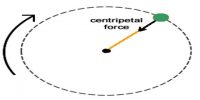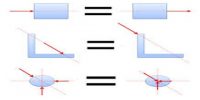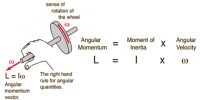Matter is a substance, which has certain mass and occupies some volume. Matter exists in three states namely solid, liquid and gas. A fourth state of matter consisting of ionised matter of bare nuclei is called plasma. However in our forth coming discussions, we restrict ourselves to the first three states of matter. Each state of matter has some distinct properties. For example a solid has both volume and shape. It has elastic properties. A gas has the volume of the closed container in which it is kept. A liquid has a fixed volume at a given temperature, but no shape. These distinct properties are due to two factors:
(i) interatomic or intermolecular forces
(ii) the agitation or random motion of molecules due to temperature.
In solids, the atoms and molecules are free to vibrate about their mean positions. If this vibration increases sufficiently, molecules will shake apart and start vibrating in random directions. At this stage, the shape of the material is no longer fixed, but takes the shape of its container. This is liquid state. Due to increase in their energy. if the molecules vibrate at even greater rates, they may break away from one another and assume gaseous state. Water is the best example for this changing of states. Ice is the solid form of water. With increase in temperature, ice melts into water due to increase in molecular vibration. If water is heated, a stage is reached where continued molecular vibration results in a separation among the water molecules and therefore steam is produced. Further continued heating causes the molecules to break into atoms.













